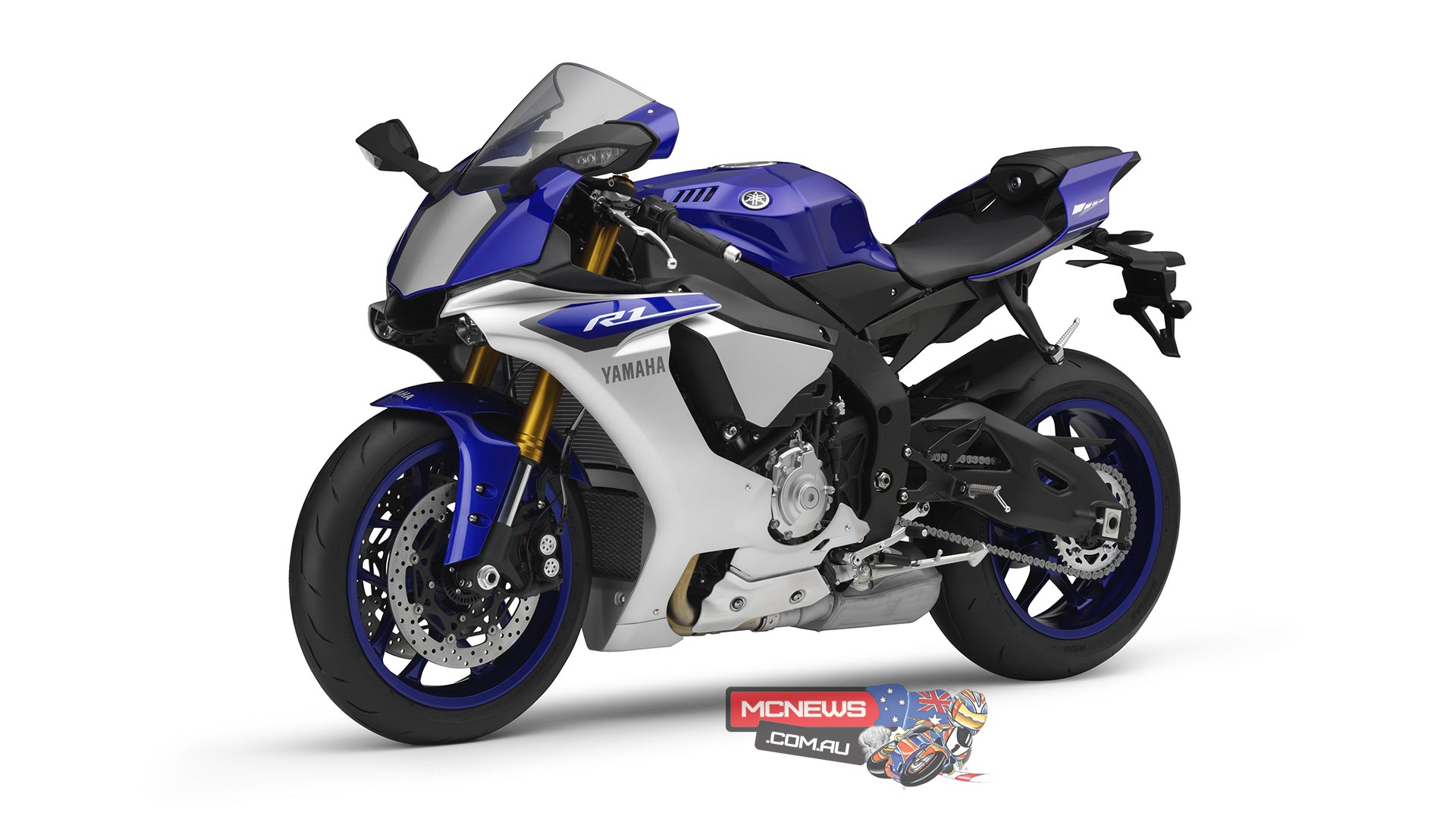YZF-R1 ELECTRONIC CONTROLS
Every racer and track rider is always searching for total control. Because with total control comes higher cornering speeds, lower lap times, increased levels of excitement and reduced rider stress.
The all-new YZF-R1 comes with the most advanced electronic control technology ever seen on a production motorcycle, an accordingly it offers its rider the chance to attain their true potential.
No longer is mechanical superiority enough to stay at the top. The digital era has arrived, and with its total 3D controllability, the new YZF-R1 makes the impossible possible. We R1.
6-axis Inertial Measurement Unit (IMU)
For the first time on any production motorcycle, the new R1 is equipped with a highly sophisticated 6-axis Inertial Measurement Unit (IMU) that instantaneously delivers comprehensive machine running data to the ECU.
Developed exclusively for the new R1, this 6-axis IMU consists of three gyro sensors that measures machine pitch, roll and yaw, as well as three G- sensors that transmits data on forward/backward, left/right and up/down acceleration. By constantly analysing this data 125 times per second, the IMU is able to establish the R1’s position and behaviour – including lean angle, slide speed and pitching rate. Data is then sent via a CAN system (Controller Area Network) to the ECU that makes real time calculations and instantly adjusts the R1’s various electronic control systems in order to achieve optimum performance with high levels of controllability.
The significance of the 6-axis IMU is not limited to its ability to give precision control via the ECU to adjust the fuel injection volume, ignition timing and throttle valve opening. What makes this technology so ground-breaking is its ability to deliver precise data on every aspect of running machine attitude, and this in turn has enabled Yamaha to equip this new superbike with the most advanced MotoGP technology, such as a banking angle sensitive rear wheel Slide Control System (SCS) and Traction Control System (TCS).
For the first time ever, racers and track riders have access to a race-ready production motorcycle that, through the use of the advanced electronic control systems described in the next section, enables every rider to attain their full potential on the track.
New banking angle sensitive Traction Control System (TCS)
One of the advanced new control technologies that has been made possible by the use of the 6-axis Inertial Measurement Unit (IMU) is a newly developed Traction Control System (TCS) that takes account of banking angle when controlling rear wheel drive force.
TCS is able to optimize the drive force to the rear tyre by monitoring the difference in speed between the front and rear wheels, and if it detects that rear wheel traction is being lost, the ECU adjusts the throttle valve opening, fuelling and ignition timing accordingly.
The R1’s newly developed TCS takes the concept to the next level by using additional data relating to the bike’s banking angle when calculating the optimum rear wheel control settings. For example, when the R1 is cornering at a high banking angle, the IMU’s sensors will activate the TCS to a higher level of control than when the motorcycle is upright – allowing the R1 rider to achieve optimum performance on a circuit, or whether powering out of a corner or accelerating in a straight line.
 2015 Yamaha YZF-R1
2015 Yamaha YZF-R1Slide Control System (SCS)
Just two years after introducing the technology on our MotoGP bikes, Yamaha is making history by offering our customers the opportunity to experience the most sophisticated electronic control technology available on a production motorcycle.
Using data from the revolutionary new 6-axis IMU, Yamaha’s patented Slide Control System (SCS) is designed to limit sidewards movement of the rear tyre by adjusting the engine’s output to an optimal level via the ECU when a slide is detected. This advanced new system works in association with the new banking angle sensitive TCS, and this high level of electronic control enables riders raise their game.
Front LIFt control system (LIF)
The third weapon in the R1’s control armory is its LIFt control system (LIF) that has been developed to control front wheel lift when accelerating hard. Once again, this use of this electronic control system has been made possible by the installation of the 6-axis IMU, and, the new LIF helps achieve a higher level of machine control for reduced lap times.
Launch Control System (LCS)
For fast, smooth and efficient starts, the Launch Control System (LCS) restricts engine rpm to below 10,000rpm even at full throttle. This control system also uses information from the TCS and LIF systems in order to maintain an optimum level of engine output when accelerating away from the start line, allowing the rider to concentrate fully on the crucial first few seconds of any race.
Quick Shift System (QSS)
Racers and track day riders will benefit greatly from the 6-axis IMU, TCS, SCS, LIF and LCS – and another significant piece of electronic control technology that is designed to reaffirm the R1’s race ready specification is its Quick Shift System (QSS). A sensor on the shift lever rod detects when the rider is upshifting, and the QSS sends data to the ECU that cuts drive torque to the engaged gear for swifter gear shifting.
Power mode selection (PWR)
The newly developed Power mode selection (PWR) gives the professional racer and track day rider the option to choose from a selection of four different adjustable running modes. This new PWR system is a further development of the proven Yamaha D-MODE system, and the four different control maps regulate the R1’s throttle valve opening in relation to the throttle position.
Yamaha Ride Control system (YRC)
The new R1 comes with a Yamaha Ride Control system (YRC). The YRC offers 4 grouped presets for quick and simple ‘one-click’ selection of all electronic controls through easy handlebar switches. In the YRC each of the control modes can be freely adjusted into new combinations based on user preferences and riding environment.
.png)


Comment